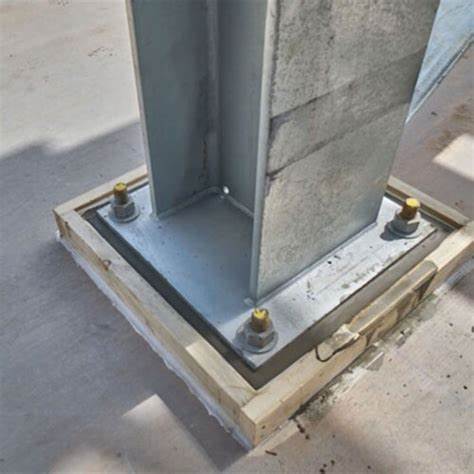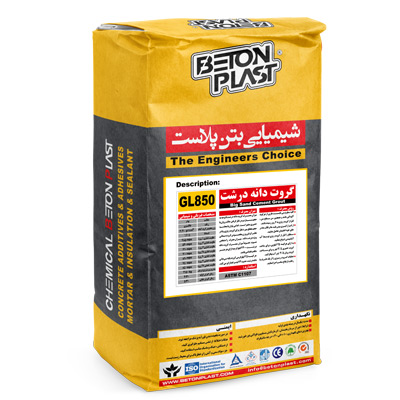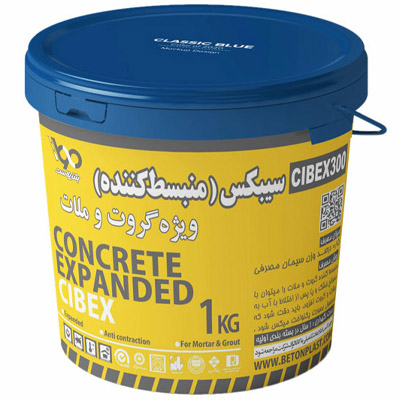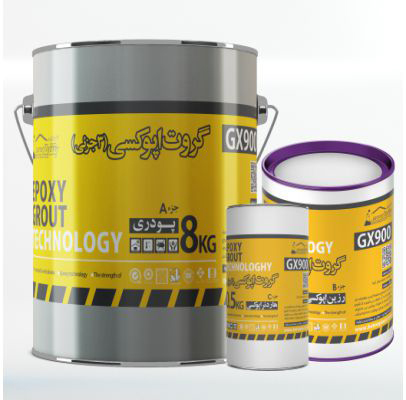Special Cement Grout
- Achieving compressive strength of 75 MPa
- Protection of rebars and reinforcements against corrosion
- Free expansion (volume change) controlled
Description
Special Cement Grout
The size, type, and shape of aggregates play a significant role in the strength of grout or concrete. Using unsuitable aggregates with high impurity levels or fine particles like soil can negatively impact the strength and durability of the mix. This results in a significant decrease in compressive, flexural, and tensile strength. In the case of grout, the type and size of aggregates are crucial factors in determining its quality and strength. Special Cement Grout with coarse, controlled-size aggregates is one of the most resistant types of cement-based grouts.
The composition of cement grout includes aggregates with diameters ranging from 5 to 10 mm, which enhances the compressive and flexural strength of the grout compared to similar grout types. The primary application of this grout is in large-scale grouting, where strength is of great importance. Due to the size and type of aggregate gradation, this grout provides good strength once it sets.
This grout is especially suitable for grouting in areas with low reinforcement density. The cement grout with coarse aggregates, made from silica with a maximum size of 10 mm, concrete superplasticizer powder, polypropylene fibers, and expansive (anti-shrinkage) agents, forms a strong and durable mixture. This grout is an ideal choice for grouting beneath base plates, beneath heavy industrial machine plates, and in large and bulky sections. Additionally, this grout has a compressive strength of 75 MPa.
More products ; grout

Features Special Cement Grout
- Increases the workability time of the grout in its plastic state.
- Possesses a compressive strength of 75 megapascals.
- Capable of achieving both early and final compressive strength in a short period.
- High tolerance to deformation under applied forces.
- Protects rebar and reinforcement from corrosion.
- Provides high flexural and tensile strength.
- Reduces permeability compared to regular grouts.
- Achieves desired workability without the need for additional superplasticizers.
- Controls shrinkage of the grout through gas expansion.
- Excellent resistance to freeze-thaw cycles and temperature changes.
- Enables faster utilization of the structure.
- Controlled free expansion (volume change).
- No cracking due to shrinkage and contraction.
- Good resistance to weather changes.
- No cracking after the grout has hardened.
- Achieves early strength without the need for set accelerators.
- High compressive strength, suitable for structural load-bearing.
- Suitable for filling larger spaces and large volume cavities.
- Due to its excellent mechanical properties, it is ideal for strengthening structures.
- Good resistance to temperature and humidity changes.
Applications
- Suitable for the installation of industrial machinery with high vibrations, such as generators, turbines, compressors, and diesel engines.
- Ideal for filling the gaps between column plates and foundations in low reinforcement areas and with small volumes.
- Can be used as mortar for the installation and stabilization of anchor bolts and fence bases.
- Can be used as a durable ready-mix mortar for general construction work.
- Suitable for installing and stabilizing column plates in steel frame buildings.
- Perfect for grouting bridge foundations and filling the gap between columns and the bridge deck.
- Effective as a waterproof mortar for grouting around water-passing pipes in concrete walls.
- A suitable replacement for mortar or concrete in many applications.
- Can be used for the installation and stabilization of pre-cast columns and walls.
Method of using
To use coarse aggregate cement grout, first ensure that the plates are properly positioned in place. If necessary, check the levelness of the base plates using a level. It is important to note that grouting can only be done on surfaces that are at least 7 days old. The distance between the bottom of the plates and the concrete surface should be at least 15 mm.
All surfaces in contact with the grout should be free of any contaminants, such as grease, oil, dust, or dirt, to prevent water from escaping before initial setting. If there are any loose or flaky areas on the concrete surface, they should be cleaned using methods such as grinding, water jetting, or other appropriate physical techniques to ensure a stable and suitable surface for grouting. The molds used must be completely resistant to water infiltration.
The height of the molds should be between 2 to 5 centimeters higher than the base plates. To prevent air bubbles during grouting, a head box should be used for large grouting volumes. For smaller volumes, a 50 cm wide sheet, with a length that matches the wall of the mold at a 45-degree angle, should be used to ensure uniform and continuous flow of the grout.
Before pouring the grout, the selected surface should be saturated with potable water to prevent the grout water from being absorbed by the dry surface, which can lead to shrinkage and cracking. The mixing container for the grout powder and water should have sufficient capacity to mix one bag of coarse aggregate grout (25 kg) and water.
For making a paste-like grout, 3.5 liters of water are required, and for fluid grout, 4.5 liters of water per 25 kg bag is needed. The grout powder should be gradually added to the water while the electric mixer is running, continuing until a homogeneous mixture is obtained. This mixture should be used within 30 minutes after mixing.
No additives or foreign materials, such as cement or aggregates, should be added to the grout mix. Grouting should always begin from one side, and the grout should flow to other areas due to its own fluid pressure. For large sections, the flow pressure can be increased by increasing the height of the grout.
For very large sections, it is recommended to use temporary molds to divide the section into smaller parts. Additionally, adequate space should be provided below the base plates to prevent air entrapment.
The temperature of the environment and water during grouting should be between 5°C and 30°C. Temperatures above 30°C accelerate setting, while temperatures below 5°C delay initial setting. Grout should be stored in its original packaging in a sheltered space in both hot and cold weather conditions.
In hot weather, to balance the internal temperature of the grout, cold water should be used for mixing. Conversely, in cold weather, warm water should be used. After grouting and initial setting, the mold should be covered with a layer of wet burlap, and the burlap should be covered with plastic to prevent water evaporation. Finally, the surface should be cured for 7 days.
Technical specification table
| state of | powder |
| Color | Gray |
| Special Weight | 3/2 gr/cm3 |
| Chlorine ion | does not have |
Package
25kg bag






Reviews
There are no reviews yet.